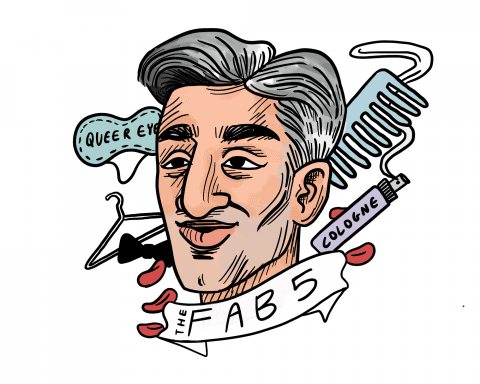Students are obsessing over one new Netflix series, Queer Eye, which presents a wholesome take on your typical reality television show by approaching the stereotypical southern social conservative with five — hella sexy — gay men.
The show itself follows a group of queer men — dubbed the Fab Five — who embark on a mission to help another man find his confidence in each episode. Each of the Fab Five has their own respective responsibility: fashion, personal grooming, food, interior design and culture. Each southern candidate who is nominated receives a total makeover of his closet, hair, cooking, home and attitude.
Although the idea seems basic and reeks of Stacey and Clinton from What Not to Wear, the show’s ability to go beyond someone’s outer appearance offers a much more holistic approach to confidence.

The men who are made over always find an aspect of themselves that they did not know they could access — whether that be by finding the confidence to ask their crush out, learning how to embrace their feminine qualities or coming out to their family.
Netflix has been known to create a form of art that embraces the uniqueness of contemporary Western culture, and this series is no different. Queer Eye offers a different take on masculinity that discards our restrictive cultural beliefs about what it is to be a “real” man. The Fab Five take participants on a myriad of excursions where they learn how to moisturize, create a healthy snack or participate in activities like dancing.
The greatest value of the show is its ability to deconstruct toxic masculinity. In learning how to engage in practices that are traditionally viewed as feminine, the men who participate in the show are able to partake in forms of self-care that are typically reserved for women. In a social climate where men are punished for expressing traditionally feminine traits — such as emotion — Queer Eye shows men that rejecting
hyper-masculinity is healthy.
Despite the great strengths of the series, Western neoliberal economics nearly soils the progress that Queer Eye appears to make. The participants are taught how to dress themselves, but this process — with the exception of a single episode that brings a father of six to Target — brings the men to fancy boutiques with a price tag that no viewer wants to imagine.
Most episodes require that the men take themselves or their loved ones on extravagant — and expensive — excursions that the average American would likely struggle to afford. While Queer Eye presents a refreshing take on what it means to be a man and how masculinity can function in Western democracies, it also serves as a reminder that deconstructing social norms comes at quite a cost.
In this manner, the series inadvertently describes the ideal man as someone who can afford a closet full of boutique clothing, a bi-weekly trip to the barber and private dance classes. For the low investment of your entire bank account, you too can learn how to properly deconstruct masculinity and be a true man.
—
Kirsten Samson
Graphic: Jaymie Stachyruk